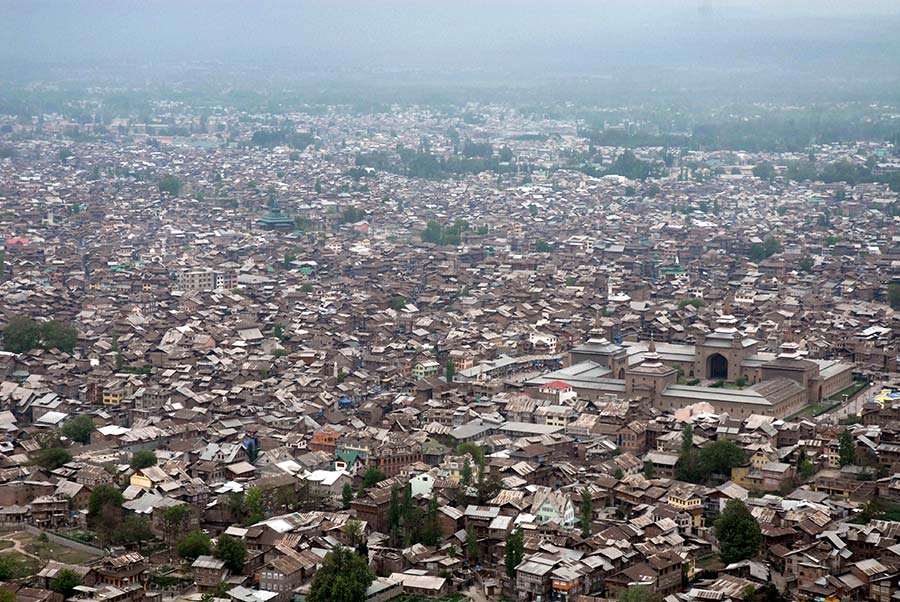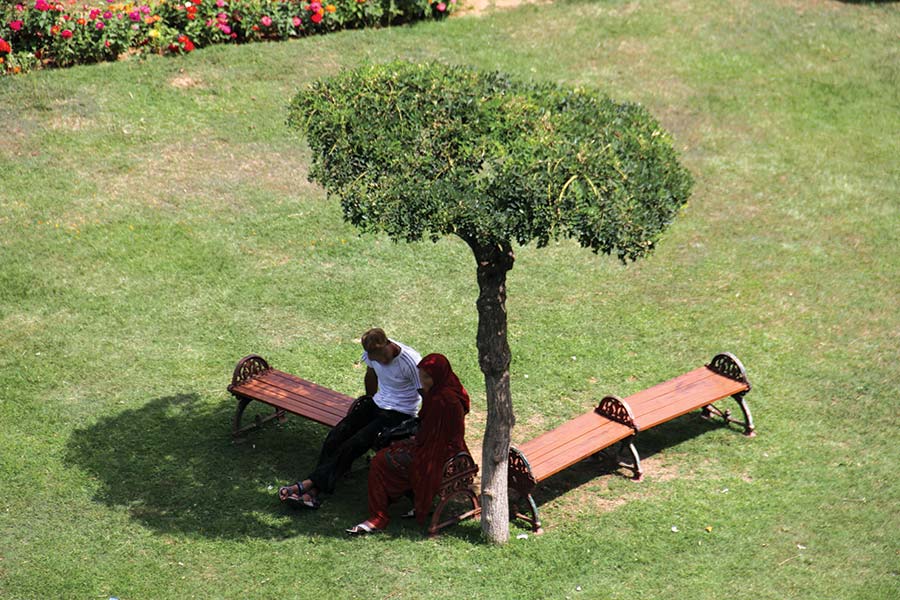by Minhaj Masoodi
SRINAGAR: The maiden Multidimensional Poverty Index (MPI) report released by the National Institute of Transforming India (NITI) Aayog has revealed that Jammu and Kashmir and newly carved out Ladakh UT has 12.8 per cent of its population which are “multi-dimensionally poor”. The study based on the date of 2015-16 is in tune with the earlier findings that Jammu and Kashmir is one of the least poor states in India where the BPL ratio of the population was less than half of the national average.

As per the report, Srinagar is the multi-dimensionally least poor district. The district has an MPI score of 0.006 and has only 1.51 per cent of its population which is poor. Pulwama (3.79 per cent), Shopian (6.51 per cent) and Budgam (6.84 per cent) respectively are the districts that have the least poor population after Srinagar.
The Ramban district on the other hand is multi-dimensionally most poor with 35.26% of its population who are multi-dimensionally poor. Ramban has an MPI score of 0.163. Doda district is in second place with a 28.92 per cent multi-dimensionally poor population.
Baramulla has a poor percentage of 7.06, Kulgam 7.43, Ganderbal 7.82 per cent, Anantnag 8.36 per cent, Bandipora 11.07 per cent, Kupwara 16.08 per cent.
In the Jammu division, Jammu district has the least multidimensionally poor population of 6.97 per cent followed by Samba 9.67 per cent, Kathua 13.08 per cent, Reasi 21.92 per cent, Poonch 24.27 per cent, Kishtawar 24.29 per cent, Udhampur, 26.83 per cent, Rajouri 27.52 per cent.
Twin districts of Leh and Kargil in Ladakh have 5.36 per cent and 19.4 per cent multi-dimensionally poor people. It means Kargil has almost four times poor population in comparison to Leh.
The report has stated that as per the uncensored headcount ratio, 25.9 per cent of the population is deprived of nutrition, 12.7 per cent of maternal health, 45.2 per cent of cooking fuel, 47.0 per cent of sanitation while 14.2 per cent of the population is deprived of drinking water.
A household is considered nutritionally deprived if woman between 15 to 49 years or man between ages of 15 to 54 years if found to be with a body mass index which is less than 18.5 kg/m2. The children under 5 years of age are considered malnourished if their z-score of height-for-age and weight-for-age is below minus two standard deviations from the median of the reference population.
The report further stated that a household is considered to be deprived with regard to maternal health if any woman in the household who has given birth in the five years preceding the survey has not received at least four antenatal care visits for the most recent birth or has received assistance from trained skilled medical personnel during recent childbirth.
Meanwhile, a household is considered deprived of drinking water, if it does not have access to safe or improved drinking water within a 30-minute walk from home.
In India, the nutritionally deprived population stands at 37.6 per cent, maternal health at 22.6 per cent, sanitation at 52 per cent, cooking fuel at 58.3 per cent and electricity and housing at 12.2 and 45.6 per cent respectively.
Among states and union territories, Kerala is a multi-dimensionally least poor state with just 0.71 per cent of its population as poor, while Jammu and Kashmir rank 16th and fares better than states such as Gujarat and Maharashtra.
Bihar is the most multi-dimensionally poor state with 51.91 per cent of its population in the poor category followed by Jharkhand with 42.16 per cent.
As per the report, in early 2020, the Cabinet Secretariat, Government of India, identified 29 global indices to monitor, analyse and evaluate with the aim of improving India’s position in global rankings.
Under this mandate, also known as the Global Indices for Reforms and Growth (GIRG) mandate, NITI Aayog was identified as the nodal agency for the Multidimensional Poverty Index (MPI).
India’s national MPI measure uses the globally accepted and robust methodology developed by the Oxford Poverty and Human Development Initiative (OPHI) and the United Nations Development Programme (UNDP), who have been key partners in ensuring the public policy utility and technical rigour of the Index. Importantly, as a measure of multidimensional poverty, it captures multiple and simultaneous deprivations faced by households.
“This baseline report of India’s first-ever national MPI measure is based on the reference period of 2015-16 of the National Family Health Survey (NFHS). The national MPI measure has been constructed by utilizing twelve key components which cover areas such as health and nutrition, education and standard of living,” vice-chairman NITI Aayog, Dr Rajiv Kumar has said in a message.
The report has revealed poverty patterns throughout India. The report said that it has employed a non-monetary poverty index, which captures overlapping deprivations in health, education and living standards. It further said that the report also complements income poverty measurements because it measures and compares deprivations directly by capturing information on broader quality parameters.















